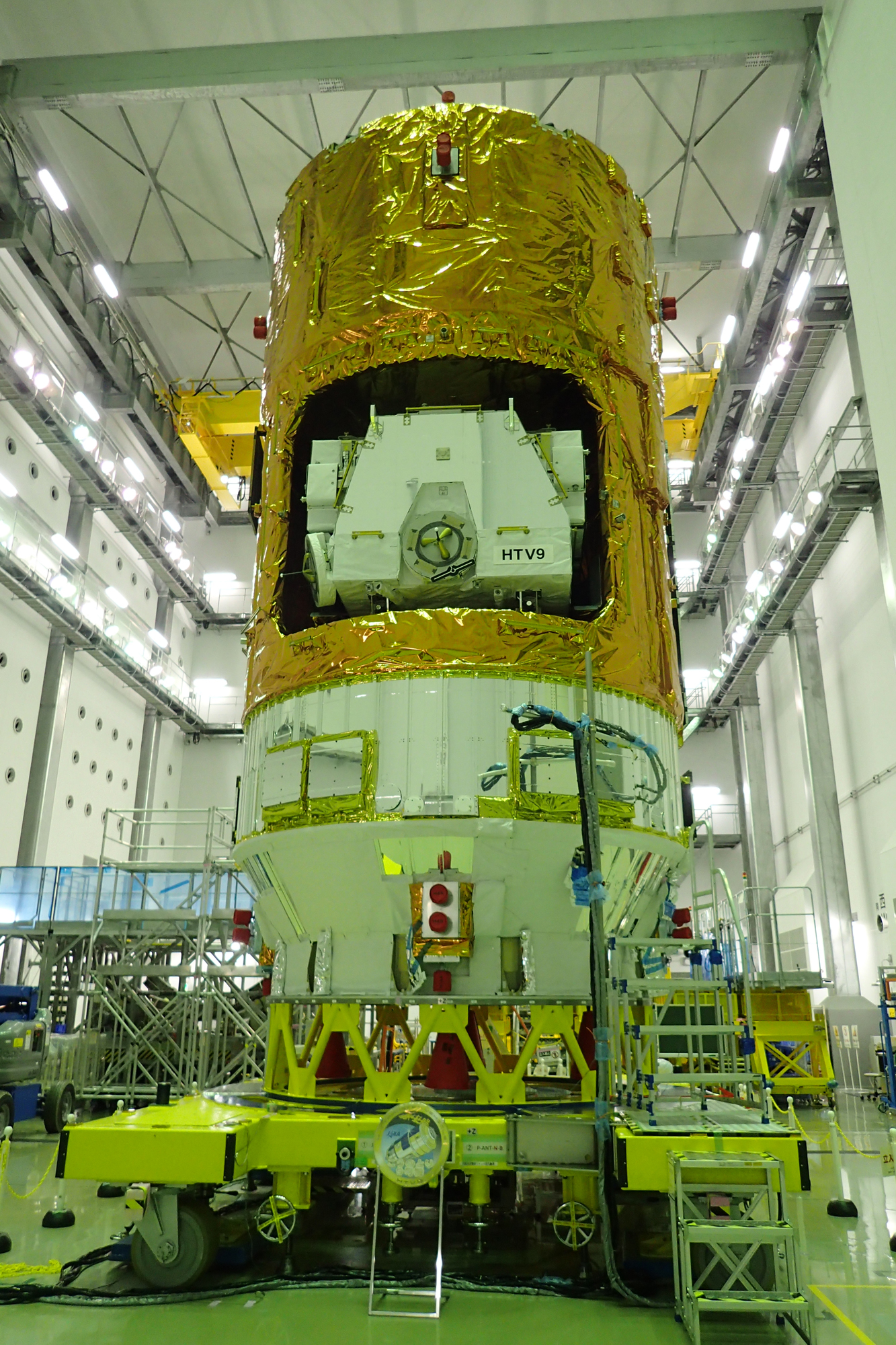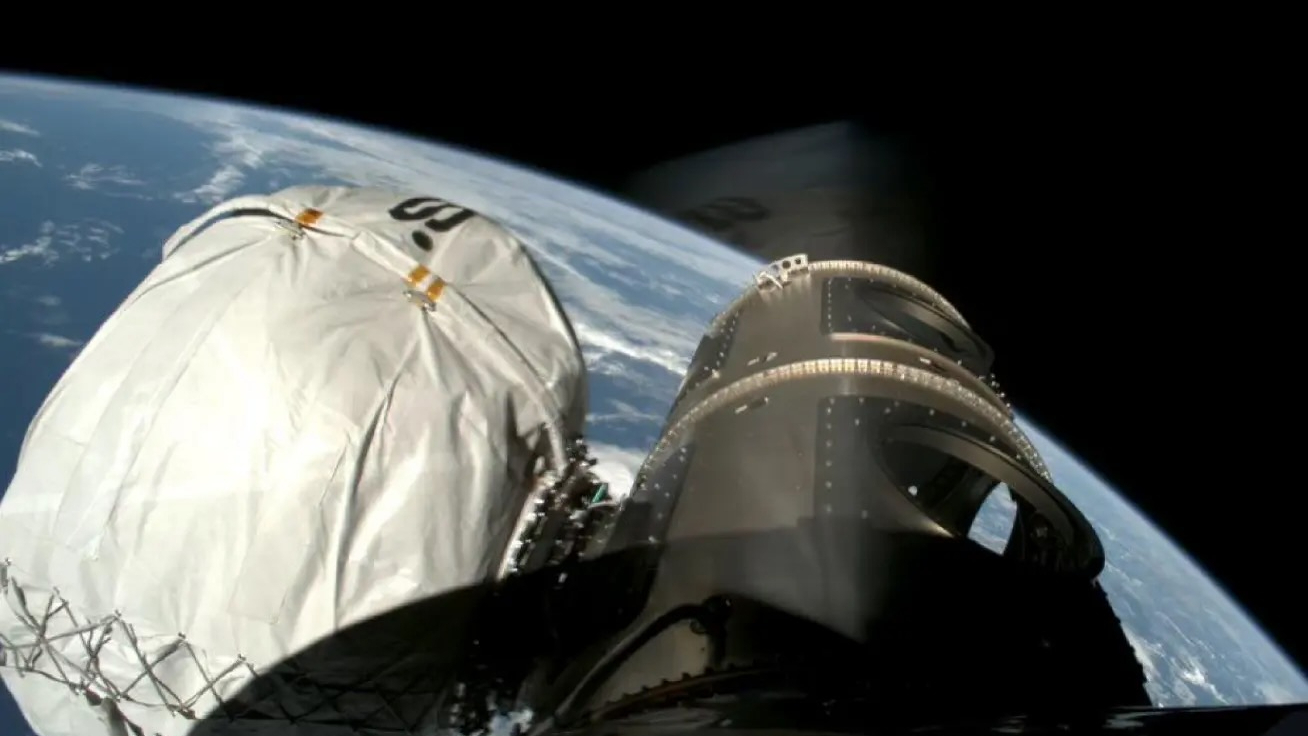Japan will launch its last HTV cargo ship to the space station today. Here's how to watch live.
Liftoff is set for 1:31 p.m. EDT (1731 GMT).
The Japan Aerospace Exploration Agency (JAXA) will launch the last of its robotic cargo ship fleet today (May 20) to resupply the International Space Station and you can watch it live online.
JAXA's final H-II Transfer Vehicle, called HTV-9, will launch more than 4 tons (3.6 metric tons) of supplies from the Tanegashima Space Center in southern Japan atop a Mitsubishi Heavy Industries H-IIB rocket. Liftoff is scheduled for 1:31 p.m. EDT (1731 GMT).
You can watch the launch live here and on Space.com's homepage beginning at 1 p.m. EDT (1300 GMT), courtesy of NASA TV. You can also watch the launch directly from JAXA here.
Related: How Japan's HTV cargo ships work (infographic)
HTV-9 is carrying more than 8,000 lbs. (3,600 kg) of supplies to the International Space Station and should arrive on Monday (May 25).
Packed among the cargo are water, spare parts and science gear, and six new lithium-ion batteries for the space station's solar arrays. The spacecraft is also carrying a new JAXA instrument called the Confocal Space Microscope to study fluorescence in biological samples on the station, as well as a high-resolution binocular telescope called iSIM (Standard Imager for Microsatellites) built by the Spanish company Satlantis Microsats S.L.
Related: Japan's robotic space cargo ship fleet in photos
Get the Space.com Newsletter
Breaking space news, the latest updates on rocket launches, skywatching events and more!

The iSIM telescope is designed to snap images of Earth at resolutions of less than 1 meter, according to a NASA description. It will be mounted to the porch-like external facility of JAXA's Kibo space laboratory on the station.
HTV-9 is also carrying what JAXA officials are calling the world's first "space avatar," which will provide live views of Earth from space through the Kibo space lab's windows. The project is part of a commercial partnership with ANA Holdings in Japan and described as "a real-world robot controlled by a human that will enable the operator to see, hear, feel and interact freely in a remote environment in real-time," according to JAXA.
A space truck retires
JAXA's HTV spacecraft, also called Kounotori (Japanese for "White Stork"), are golden cylindrical cargo ships about the size of a bus designed for one-way trips to the International Space Station. They can haul up to 6 tons (5.4 metric tons) of spare parts and experiments for the station's exterior in an unpressurized section, as well as standard food, water and other gear for astronauts inside a pressurized compartment.
HTV vehicles can't dock themselves to the space station like Russia's Progress vehicles and the European Space Agency's now-retired Automated Transfer Vehicles. Instead, they are captured by astronauts wielding the station's robotic arm. Once a mission is complete, an HTV spacecraft is released from the station and commanded to burn up in Earth's atmosphere for disposal.
The first HTV launched in 2009, which also marked the debut for the H-IIB rocket in Japan.
JAXA is now developing a new spacecraft, the HTV-X, to replace the HTV, with the first launch targeted for 2022. The HTV-X will be able to dock itself to the station's new International Docking Adapters, and feature a reusable pressurized module that will return to Earth.
JAXA's HTV-X is also expected to serve as a cargo ship for NASA's planned Gateway space station around the moon, according to an Asahi Shimbun report. JAXA has released concepts of the new cargo ship at NASA's Gateway station.
- Space Station's Robotic Cargo Ship Fleet (A Photo Guide)
- NASA, Japan Consider Joint Crewed Moon Missions
- JAXA: Japan's Aerospace Exploration Agency
Email Tariq Malik at tmalik@space.com or follow him @tariqjmalik. Follow us @Spacedotcom, Facebook and Instagram.
OFFER: Save 45% on 'All About Space' 'How it Works' and 'All About History'!
For a limited time, you can take out a digital subscription to any of our best-selling science magazines for just $2.38 per month, or 45% off the standard price for the first three months.
Join our Space Forums to keep talking space on the latest missions, night sky and more! And if you have a news tip, correction or comment, let us know at: community@space.com.

Tariq is the Editor-in-Chief of Space.com and joined the team in 2001, first as an intern and staff writer, and later as an editor. He covers human spaceflight, exploration and space science, as well as skywatching and entertainment. He became Space.com's Managing Editor in 2009 and Editor-in-Chief in 2019. Before joining Space.com, Tariq was a staff reporter for The Los Angeles Times covering education and city beats in La Habra, Fullerton and Huntington Beach. In October 2022, Tariq received the Harry Kolcum Award for excellence in space reporting from the National Space Club Florida Committee. He is also an Eagle Scout (yes, he has the Space Exploration merit badge) and went to Space Camp four times as a kid and a fifth time as an adult. He has journalism degrees from the University of Southern California and New York University. You can find Tariq at Space.com and as the co-host to the This Week In Space podcast with space historian Rod Pyle on the TWiT network. To see his latest project, you can follow Tariq on Twitter @tariqjmalik.










